Social media is not something you can ignore and the importance of social media is even more pronounced when you think about the sales it can generate for you.
Buying is mostly an emotional decision and what better place to pitch products than on social media where emotions run high.
Here are more reasons to sell on social media:
- 57.5% of the online population buy products or services every week.
- 26.5% of social media users visit social media platforms to look for products to buy.
Skip to:
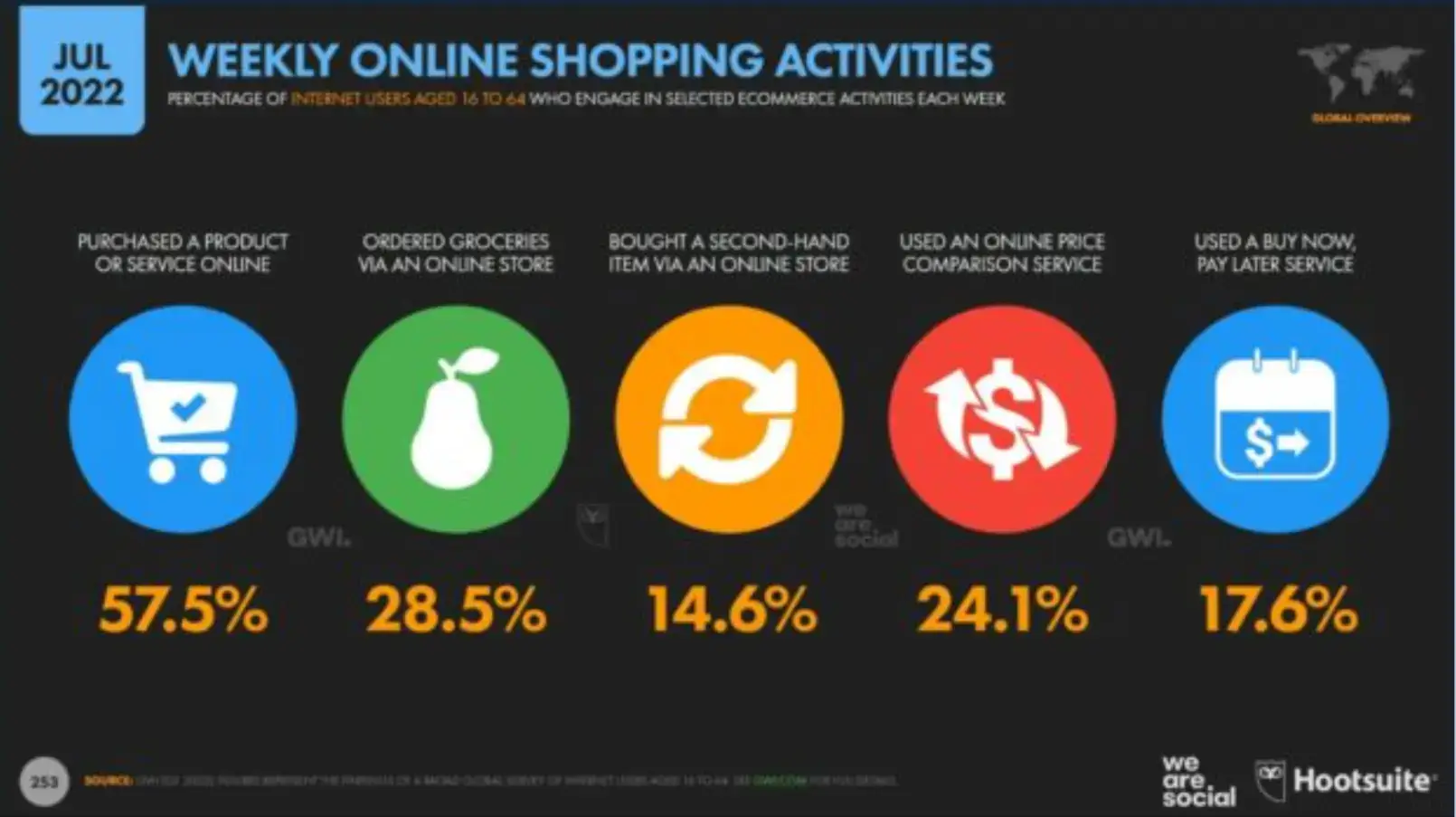
With this article, I will walk you through using social media to grow your eCommerce business.
What is Social Media eCommerce Marketing?
Social media eCommerce makes use of the power of social media to create brand awareness, to drive more sales, and sell more.
Popular social media eCommerce tactics include things like driving traffic to your eCommerce site, selling products directly on social media, engaging with prospects directly, providing support to customers, and building a thriving community online.
Most successful brands use all of the above tactics to create a thriving social media eCommerce marketing strategy.
-
Social media eCommerce marketing
Social media eCommerce marketing allows you to promote a business, product or service to drive more sales and connect with even more customers.
-
Social selling
Social selling is when you as a brand engage and influence people through social media.
Social selling isn’t markedly different to building a relationship online. With this you get the ability to connect with new customers in the online space.
Also, using the YouTube description generator will ensure that your video reaches its maximum potential audience. Social selling gives you support as well as guidance.
-
Social commerce
This is where brands sell products or services on social media with solutions like Facebook shops, TikTok, and more. Social commerce is the future.
9 Ways to Ace Social Media for eCommerce
1. Sell products directly on social media
Social commerce is now easier than ever with most social apps integrating eCommerce features inside of them.
There are tools like Facebook, Instagram, and TikTok, for example. Also, platforms like Twitter and Snapchat together with Shopify created tools to enable social commerce on their platforms.
This is an area to use the brand-building prowess of social media to benefit eCommerce solutions.
- They’re easy and free to use
- They create improved shopping experiences
- They can streamline entire sales
- They extend areas where sales can happen
- Enable headless commerce
- They create live shipping experiences
CCM is a hockey merchandise brand that is an inspiration to anyone who wants to sell on social media.
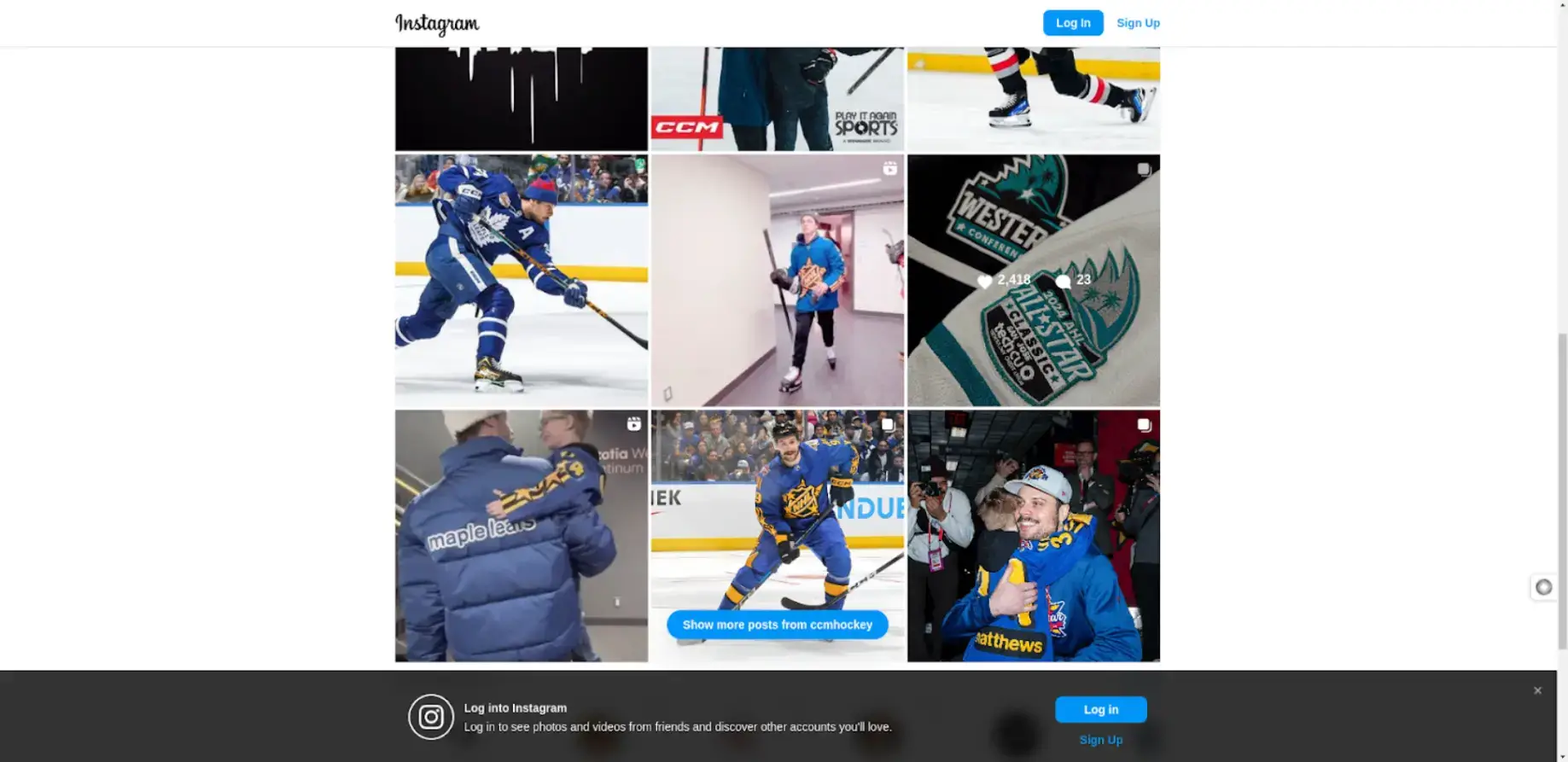
They talk about professional hockey life experience on their social media pages engaging anyone interested in living like NHL players.
They talk about gears that real NHL players use. Another great example is Rivera Maison. Riviera Maison’s 211,000 Instagram followers get daily home decor ideas from their Instagram channel.
Product photos are an important aspect of the selling cycle. However, that doesn’t necessarily mean hiring an expensive photographer. You can do studio-styled shots from your iPhone itself.
You can use Canva's Photo Book Maker to showcase your product photos in a professional and visually appealing way. You can either print out your photo book to use as a physical catalogs or share it digitally with your customers or clients.
Canva allows you to download your design as a PDF or image file, which you can then print out or share via email, social media, or your website.
Riviera Maison shares photos from customers who bought their chairs, arm cushions, duvets, and more.
Shopping is an emotional experience; conversations should always revolve around brands and products.
2. Increase sales with an eCommerce chatbot
Brands that create a better-branded footing as well as sales capacity on social media need to scale customer support too. eCommerce chatbots are an effective way to do this.
By leveraging AI-powered chatbots, brands can connect with customers 1:1 and send specific discounts, and products as well as highlight promotions.
Chatbots aren't just handy for answering FAQs – they can also usher users through complex buying decisions.
Take for instance a customer seeking web hosting solutions: they could ask a chatbot anything from "What is a dedicated server?" to "I'm launching a new website, what options do you recommend for a new business?"
Here’s an example from DeSerres. To match the demand for products during the pandemic, they added an AI chatbot on their site to drive product suggestions and sales by answering user queries.
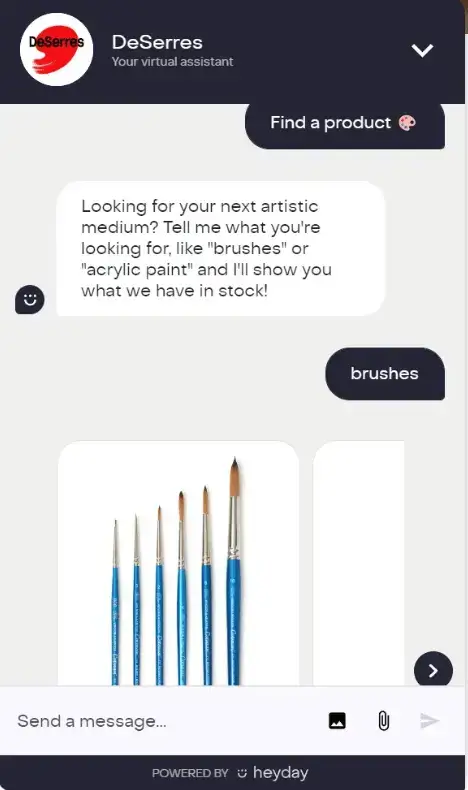
3. Post user-generated content
User-generated content is extremely popular on social media and consists of user reviews, unboxings and anything else the customer may use extensively.
This content ties back to positive reviews, social proof and influencer reviews. It’s the real world providing commentary about the project.
That’s a great avenue for brands to use on social media.
For example, in 2022, Apple created a campaign called #Shotoniphone. With this, Apple asked users to provide their best shots shot with an iPhone to their Instagram.
The campaign wanted to showcase the iPhone’s new lens design, autofocus in ultra wide and advanced features.
It used gamification to turn a campaign into UGC and there are over 29 million Instagram posts with the #shotoniphone tag.
Encourage your customers to share pictures and videos featuring your products on social media. Ask them to tag your brand. When they do, reshare the content to your own profile.
When you encourage users to reshare the content they create, that's more social proof and it shows your product in action.
All in all, customers feel more connected to your brand. It levels up engagement and you create more value for your customers.
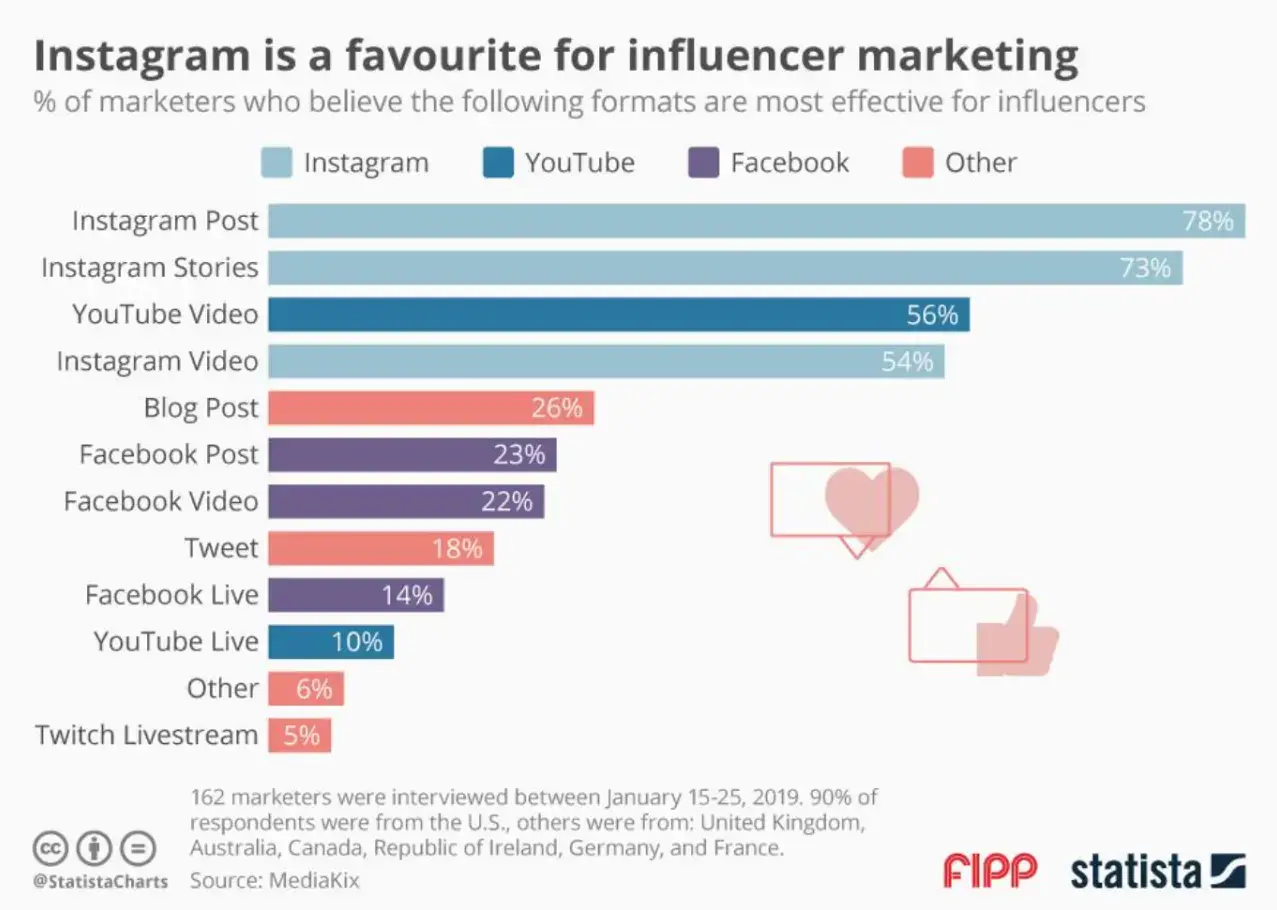
According to a report from MediKix, Instagram stories registered a 15x higher growth compared to feed-based sharing.
Brands are shying away from polished marketing campaigns and ditching them in favor of content their customers created.
93% of shoppers say user-generated content helps them figure out when to buy a product and Batoko is right on top of the trend.
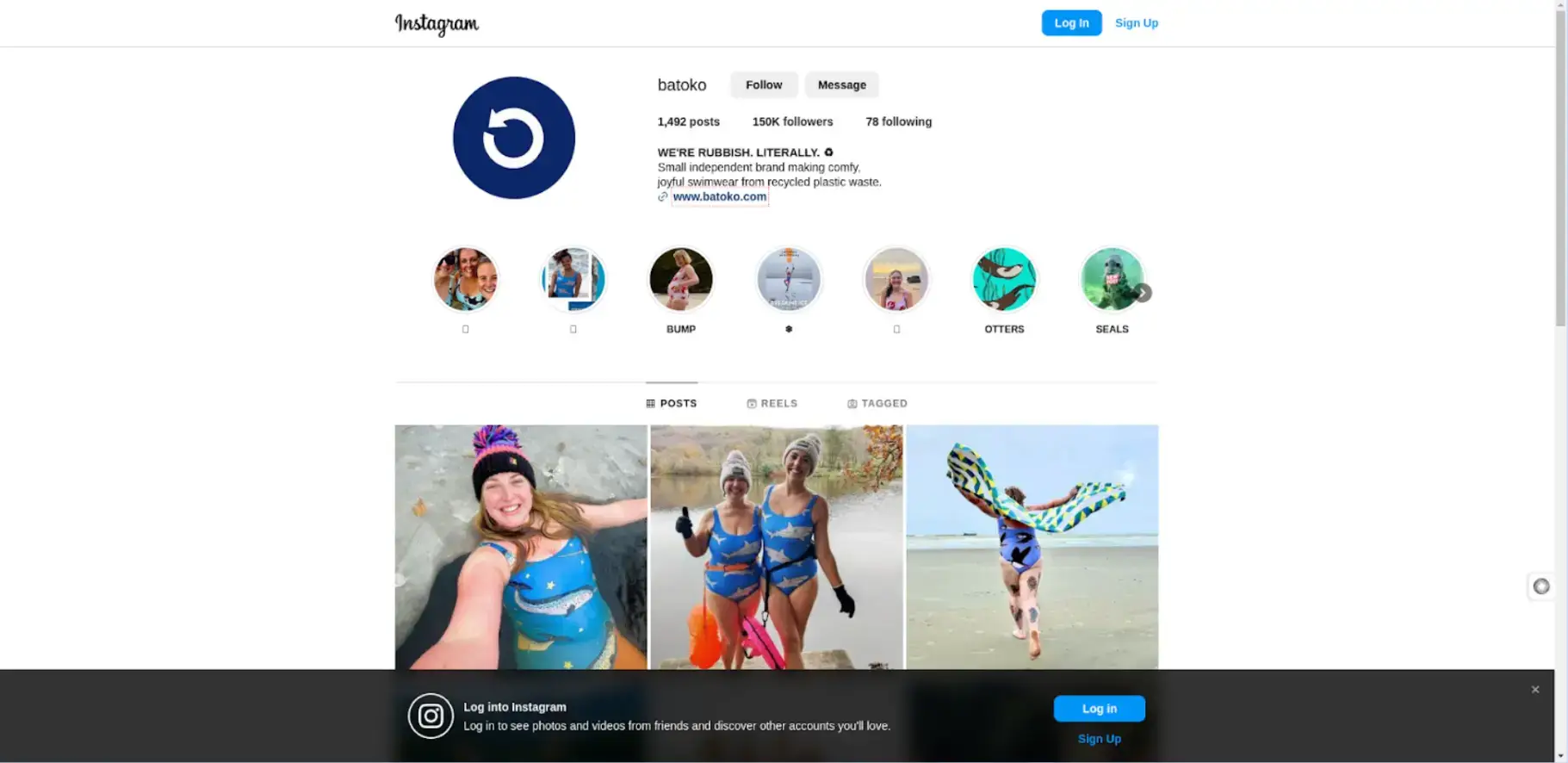
The recycled swimwear company shares customer photos on Instagram feed.
It shows photos in different environments but also in different bodies embracing both skinny and plus-sized women. It’s calling out to everyone.
If you are in a technical or boring industry like quickbooks cloud hosting, you can ask people for screenshots of sites or business stories as UGC content.
4. Provide customer support through social media
Another thing to automate is customer support via social platforms. Think about it: Your customers are already spending time on social media.
They’re great channels for nurturing customers. You can either hire and manage remote employees all over the world for 24*7 customer support or you can use chatbots.
Platforms like Facebook, Instagram, and WhatsApp Business enable efficient customer support.
Particularly, WhatsApp Business with multiple users can help manage customer interactions simultaneously, ensuring quick and consistent responses.
Netflix is one of the coolest examples of brands doing customer support on social media.
-
Netflix
Netflix has redefined how this generation watches movies and shows. As it is a platform for binge watching shows.
Something that’s equally important is its stellar customer service. Netflix responds within 24 hours. It provides information so that customers can resolve their issues themselves.
-
Skyscanner
To generate the best bargain for your air travel, Skyscanner is a travel search engine that compares hundreds of flights.
The same enthusiasm to help customers is found on their Facebook page and serves well during interactions with customers.
And that’s why they can form the best support point too. Customers may come to your profile to:
- Ask you questions
- Provide feedback on your products
- See your content
- Give you insights into products they want
Brands must be prepared to handle these comments and DMs and if you don’t, then an eCommerce chatbot is often the answer.
If you’re not relying on a chatbot, provide your social media managers with canned responses and FAQs.
For example, if someone asks, “I’m a business owner looking to improve estimates for client service work, how can you help?”
A prepared response could include: “Hey, thanks for your question! Our product includes built-in quote and follow-up features, with a variety of templates, automated calendar reminders, and more."
"If you’re looking for a simple estimate template, you can also check out our free estimate template on our website.”
Social proof is another great reason to make social profiles interesting and interactive. This impacts whether they will make a purchase or not and how you handle them privately.
5. Collaborate with others
Collaboration helps you become successful on social media. You should engage both influencers and partner up with brands to turn to profitable collaborations.
Influencer marketing generated $16.4 billion in 2022.
And it’s one of the most in-demand social commerce tactics to try today. You can also find bloggers in your niche to collaborate with. Collaborations are also important.
More brands are partnering up with other companies that share similar audiences as theirs. This helps them create high-value bundle giveaways and promotions and helps to market to their respective followers.
For instance, a Shopify shop owner can leverage his extensive network of influencers and provide them with free products to promote these products on their channels.
They also get affiliate links to promote these products.
6. Post offers and discounts
Posting early and often should be a mantra for eCommerce brands on social media. This helps you gain traction, test things up and build a great following for your eCommerce website.
Having a regular posting schedule, likewise, ensures that you are consistent with your social media strategy.
This is how you keep your brand top of mind and build an online community. Social media helps you directly connect with your clients. That’s why you should use the chance to make the most of your conversions.
Offers and discounts are an effective way to create urgency and get people to buy.
You can provide store credits, or percentage based discounts. Running these campaigns during different seasons can help your conversion rates.
Always check with analytics tools on how your campaigns perform. For instance, @simpleselfco on Instagram features promo codes offering 10% discount on chosen products.
Customers visiting the designers’ shop see a banner with the offer on and also posts highlighting the discount.
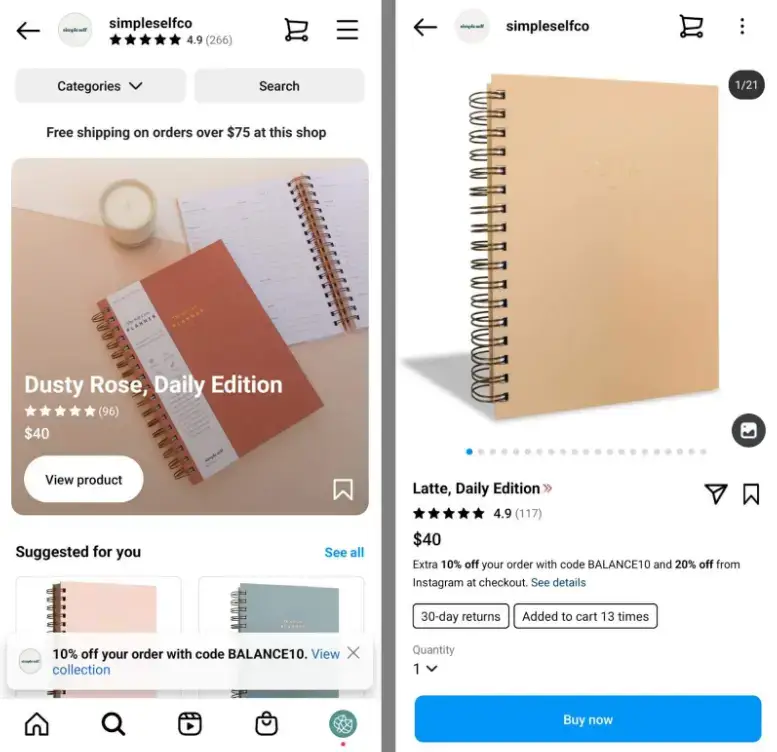
7. Make it easier to shop for your product on different platforms Instagram
Studies have repeatedly shown that Instagram is the place where brands see high engagement.
This doesn’t always mean the conversions are equally high. Plus, Instagram is highly restrictive. You’re only allowed one link in the bio which leads to your site.
This meant scrolling through the entire site to find one product you wanted. However, now with the addition of shoppable tags you can find the products where brands see high engagement.
This was because of limitations when it came to sharing links. One could only share one link on their bio which would then lead to their website.
It was tedious and really frustrating, to scroll through several products to get to what you wanted. This often ended with the person having a change of heart long before finding the product.
Shoppable tags are great for people in the beauty industry offering a smacking selection of beauty products jewelry among others. Your page needs to be converted to English for this to work though.
8. Put your money into social media ads
Sometimes, putting your effort into all the above tips may not even be helping because you may not be reaching the ideal audience or a huge number of the ideal client base.
This may be partly due to your not having a significant social media following. If this is the case, it is a wise choice to invest in advertisements on social media.
You can put up ads on Twitter, Instagram, and Facebook whichever is the most popular networking site for your business type.
If Facebook aligns with your business goals, learn how to scale Facebook ads by creating detailed audience segments, leveraging retargeting strategies, and continuously optimizing ad performance through A/B testing and precise budget allocation.
For instance Gregg’s vegan ads were a sensation. Gregg’s Vegan Sausage Roll campaign generated 516 million impressions. They engaged with their followers and followed this through on their ad.
Instagram has great tools for marketing such as video ads and carousel ads. Facebook connects you to many people and also enables you to customize your campaigns to reach the desired clientele.
When your campaigns are customized, you can then reach potential shoppers and customers, and improve your conversion rates.
9. Creating pages and joining groups
On social media, you can create two different types of pages: a brand page and a general profile page.
Your marketing is incomplete without the right strategy. Create a brand page and then use analytics to understand engagement. Analytics help you study the marketing strategies and plan for your brand’s future.
When you use social media analytics, that tells you how effective your strategies are going to be. You shouldn’t forget to remain relevant and engaging.
You can also join groups to have a grasp of what is happening in the business community and capture the relevant customers. These are some of the most successful Facebook groups out there:

Members: 3 million
This electric cooker brand uses the group to cultivate a community of instant pot users to post recipes and share the joy of cooking.

Members: 71.8K
This group focuses on world shaping women and encourages women to break barriers.
Conclusion
As you can see, above are some of the best ways to create high engagement on social media that directly contributes to conversions.
You have to find a way that marries your product into interesting content that engages and tickles your audience online. This alone will help you generate wide viewership for your content and get leads and conversions.

